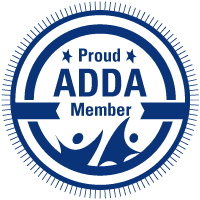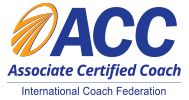Transitions can be hard. Whether the transition involves moving toward or away from something we want to be doing, toward or away from something we don’t want to be doing, or just moving from one task to another, transitions can stand in our way of productivity.
Here are three successful transition experiences I’ve worked with clients on recently:
Client #1: Challenged getting out of the house on time.
This client was consistently showing up for work about 30 minutes later than they wanted to. As a salaried individual, there wasn’t any financial repercussion for showing up late. There was, however, a self-worth repercussion and a perceived repercussion about how upper-management viewed their dedication.
What was standing in the way of getting out of the house on time? ADHD hyperfocus and poor attachment to the passing of time was the challenge. This client would spend too much time on their iPad during breakfast, resulting in running late for the rest of the day.
Strategy: It took a few tries to land on the magic, but this client now has multiple alarms set throughout the house to remind them that a transition was required.
- Alarm #1: On the bedside table.
- Alarm #2: In the closet designed to back-up alarm #1 just in case it gets ignored.
- Alarm #3: In the kitchen, indicating a transition from breakfast to personal care.
- Alarm #4: In the bathroom, indicating a transition to leaving the hour.
- Alarm #5: At the door into the garage is the “beat the clock” alarm. The race to get out of the house before the alarm went off created a dopamine-inducing contest.
Client #2: Challenged getting to bed on time.
This client was consistently getting to bed around 1:00 AM but needed to be up by 7:30. The unfortunate results were two-fold: lack of sleep and not starting their day on time.
What was standing in the way of getting to bed on time? Due to poor time management, this client wasn’t as productive as they wanted to be during the day, so they tried to make up for it between dinner and bedtime. They also had a significant case of “one-more-thing- itis.” Not only were they trying to complete their daily chore list, but they were also punishing themselves for their lack of productivity by adding more items to their list.
Strategy: The root challenge to getting to bed on time was a lack of productivity during the day. To combat this, we designed a specific, daily to-do list and slotted items into the calendar, blocking time for similar activities. For example:
- 8:00 – 9:00 AM, 1:00 – 2:00 PM, and 4:00 – 5:00 PM: Reserved for e-mail processing.
- 9:00 AM – 12:00 Noon: Reserved for concentration tasks.
- 12:00 – 1:00 PM: Reserved for lunch.
- 2:00 – 4:00 PM: Reserved for meetings.
In reality, this schedule did not happen all the time due to unexpected meetings and tasks landing on their plates. However, the time-blocked plan did, resulting in increased productivity and less scrambling at the end of the day.
Client #3: Not effectively transitioning between work and home tasks.
This work-at-home client had difficulty with clear transitions between work and home schedules.
What was standing in the way of transitioning between work and home tasks? Because they worked from home, this client didn’t have a bus schedule or carpool to signal the transition from home-to-work or work-to-home. The result was that work spilled into what would traditionally be home time by working early in the morning and long into the evening. Conversely, home snuck into work time because there was the opportunity to sneak in a load of laundry, do the dishes, or take the dog for a walk.
Strategy: This client made a clear delineation between work and home by making their office look and operate more like an office. There was an office sign on the door, the door remained closed during work hours (so the attention-craving dog was not always begging for attention), and they set up consistent lunch and break times to mirror their counterparts who worked in the corporate office. With these changes, productivity soared during the day, protecting their evenings and weekends as personal time.
What transitions are challenging you? What audible, visual, or structural changes can you make to help you become more successful at reaching your goals?
Cindy Jobs
Looking for more information?
Click here for ADHD-friendly Time Management Tools
Click here for 15-minute organizing tips.
Click here to schedule a complimentary breakthrough session.
For more helpful information, follow me on Facebook.



Attention Deficit Disorder Association
National Association of Productivity & Organizing Professionals
International Coach Federation
Institute for Challenging Disorganization
Level I Certificates earned in Chronic Disorganization; ADD; Client Administration; Time Management; Mental Health; and Hoarding.
Level II Specialist Certificates earned in Chronic Disorganization and ADHD.







